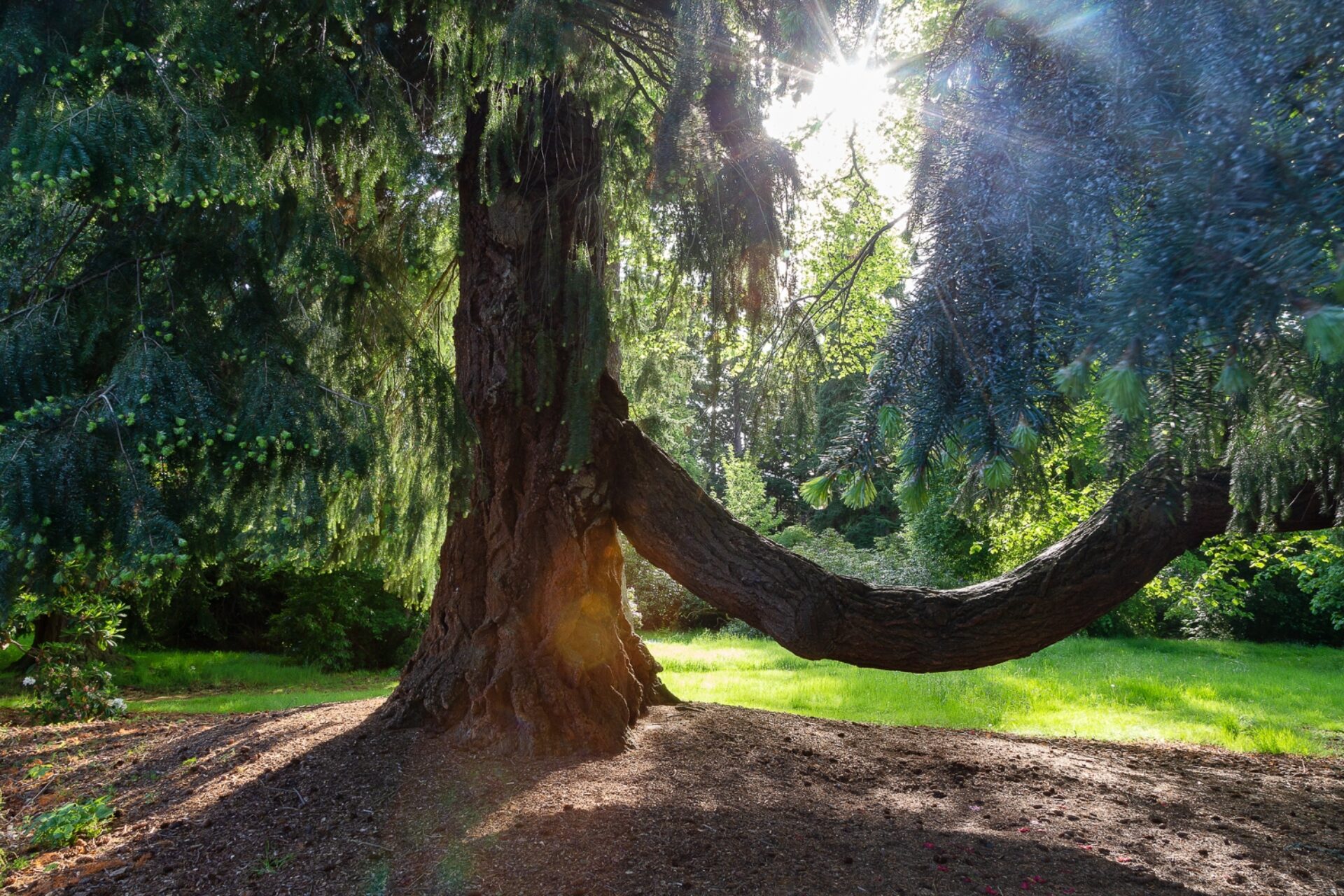The Douglas Fir at Scone Palace stands as a majestic symbol of nature's beauty and resilience within the historic grounds of one of Scotland's most iconic landmarks.
Named after Scottish botanist David Douglas who first introduced it to Britain in the 19th century, the Douglas Fir is a towering evergreen conifer known for its impressive height and graceful appearance. The tree's elegant branches and vibrant green foliage make it a striking focal point amidst the manicured lawns and winding pathways of Scone Palace.
David Douglas was born in the village of Scone in 1799 and worked as an under-gardener in the newlylandscaped palace grounds. He later went to work at the Botanical Gardens in Glasgow where his talent was quickly noticed and he was sent to North America as a collector for the Royal Horticultural Society. In the course of only a few years he sent back over 200 new species of plants. Lupins, phlox, sunflowers, Californian poppy, mimulus, flowering currant and snowberry are just a few of the common plants he discovered. He is most famous though for the giant conifer which he initially named Pseudotsuga menziesii after its discoverer, Archibald Menzies of Aberfeldy, another Scot, who had sailed to the Pacific coast with Captain Vancouver.
Douglas travelled widely and adventurously, from Oregon to Hudson’s Bay and even Hawaii, recording and collecting plants wherever he went. His journeys took him through unmapped forest and to the summits of previously unscaled mountains. After surviving many dangers he fell, in suspicious circumstances, into a pit that had been dug as an animal trap. Here he was tragically gored to death by a wild bison bull that had also fallen into the pit. He was only 36 years old.
The presence of the Douglas Fir at Scone Palace serves as a reminder of Scotland's rich natural heritage and the importance of preserving its native flora and fauna. As one of the largest and oldest trees on the estate, the Douglas Fir embodies the resilience and vitality of Scotland's forests, standing tall and proud against the passage of time.
The Douglas Fir also holds cultural significance within the context of Scone Palace's history and heritage. Its towering presence evokes a sense of reverence and awe, inviting visitors to pause and marvel at the wonders of the natural world. For generations, the tree has borne witness to the comings and goings of monarchs, nobles, and commoners alike, its branches whispering secrets of bygone eras and forgotten tales.
As visitors stroll through the gardens of Scone Palace, the Douglas Fir stands as a silent sentinel, a timeless guardian of the land and its legacy. Its towering stature and tranquil presence inspire a sense of peace and tranquillity, offering respite from the hustle and bustle of modern life.
The Douglas Fir also serves as a haven for wildlife, providing shelter and sustenance for birds, insects, and small mammals that call the palace grounds home. Its branches offer a safe refuge for nesting birds, while its cones provide a vital food source for hungry squirrels and other woodland creatures.
In addition to its ecological importance, the Douglas Fir serves as a living link to Scotland's storied past and its enduring connection to the natural world. As visitors gaze upon its majestic form, they are reminded of the timeless beauty and boundless wonders of the Scottish landscape.
The Douglas Fir at Scone Palace stands as a living testament to Scotland's rich natural heritage and the enduring beauty of its landscapes. As one of the palace's most cherished treasures, the tree embodies the spirit of resilience, strength, and vitality that has defined Scotland for centuries. Its towering presence serves as a source of inspiration and wonder for all who have the privilege of encountering it amidst the historic grounds of Scone Palace.
